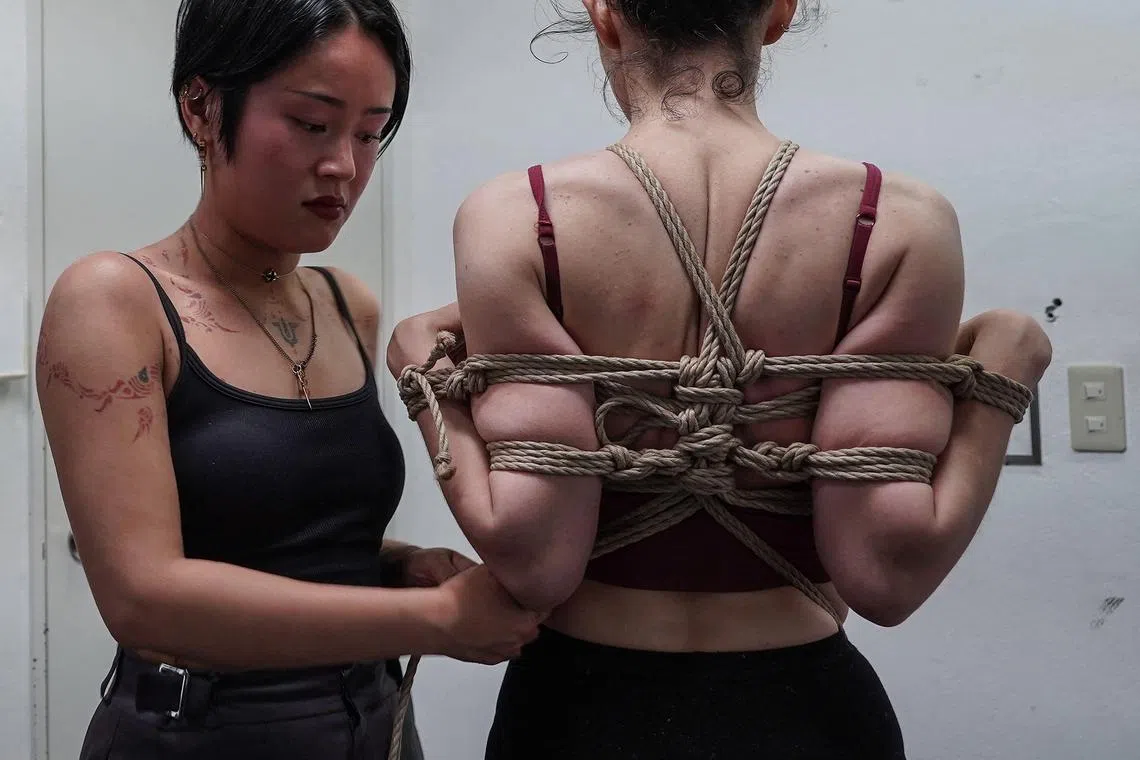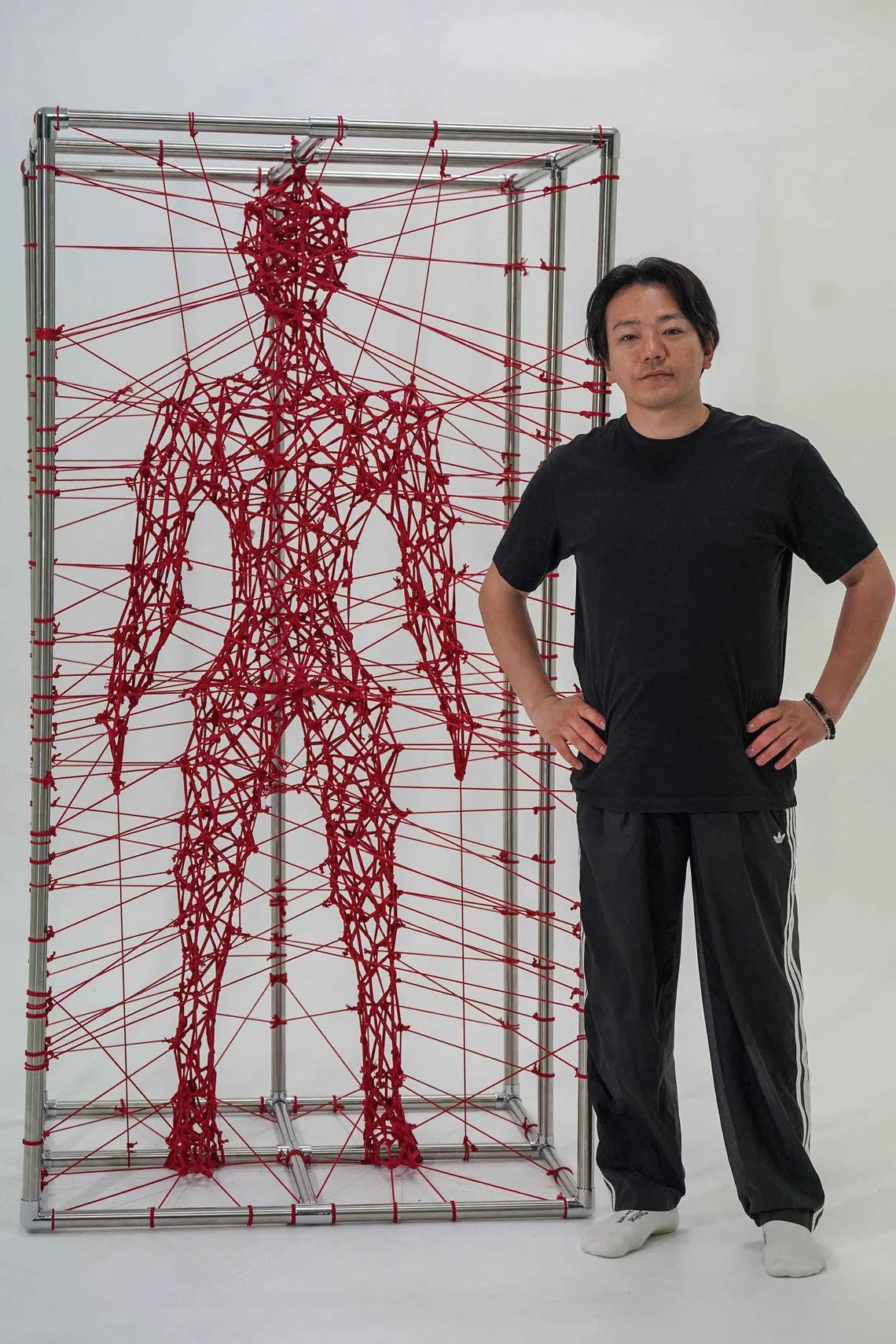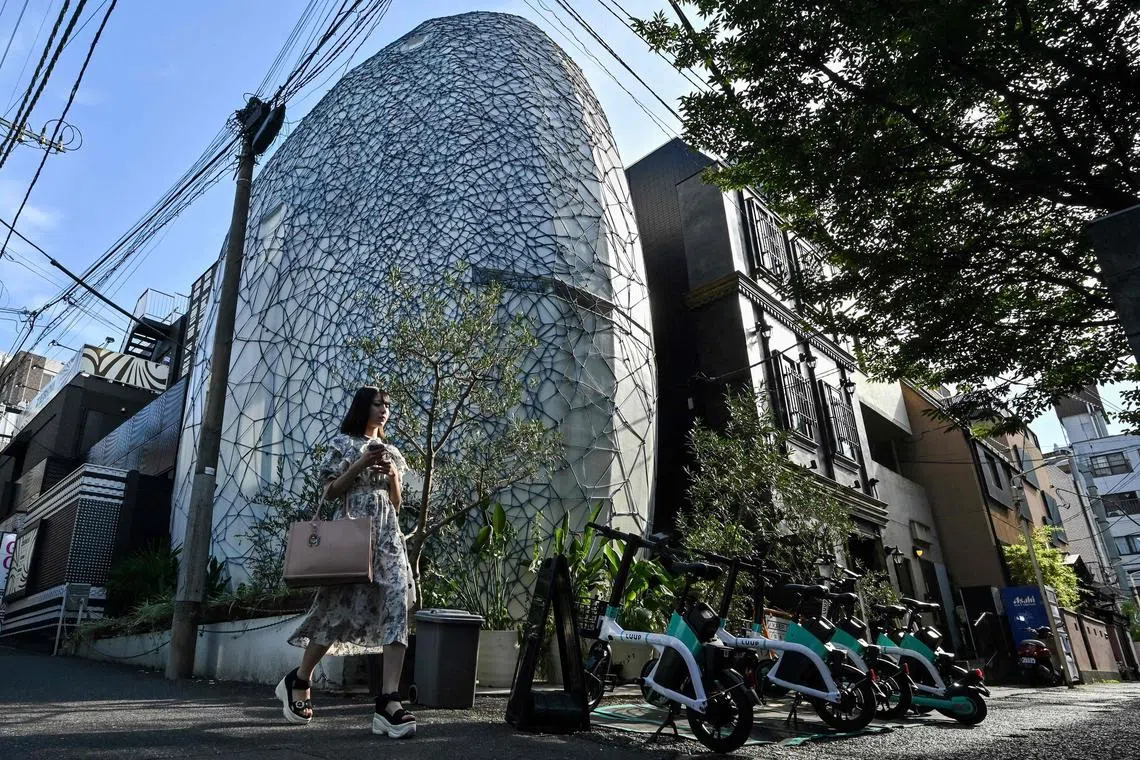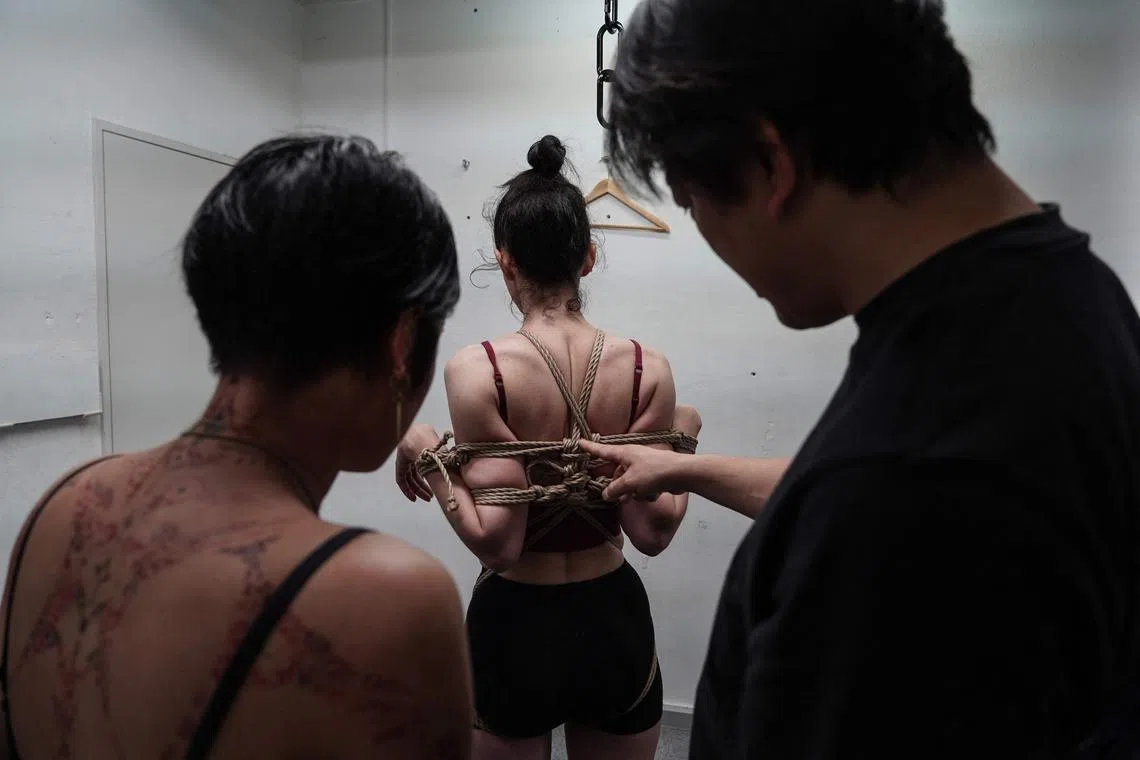Kinky knots: Japanese bondage becomes art
Sign up now: Get ST's newsletters delivered to your inbox

French student Sen (left) applies rope on a model during a certification test to become a shibari instructor, at Mr Hajime Kinoko’s studio in May.
PHOTO: AFP
Follow topic:
TOKYO – In Tokyo, a man watches a woman slowly bind another with ropes attached to chains hanging from the ceiling. But this is no sadomasochism (S&M) bar. It is a workshop led by “shibari” master Hajime Kinoko.
He teaches the knot-tying techniques of Japanese bondage, untangling the practice from its associations with kink and emphasising instead art and aesthetics.
“I see attaching not only people, but also objects or spaces, as a form of painting on canvas,” the 48-year-old said at his studio in central Tokyo. “It’s simply another type of expression.”
Kinoko discovered shibari – the art of ropes – in the 2000s while managing an S&M joint in Roppongi, an area of Tokyo known for its nightclubs and bars.
“I wasn’t particularly drawn to fetishism at first,” he said. “At the time, the focus of BDSM (bondage, discipline, sadism and masochism) was often on the dirty or degrading side, but I didn’t see that part of it as necessary.”
Kinoko learnt how to tie a woman’s body by watching others before establishing his own style “based on beauty”.
He started staging performances with a more artistic perspective, and attracted a growing audience.
“My goal is not to hurt. I don’t place myself in a hierarchical relationship,” he said.

Mr Hajime Kinoko, one of Japan’s best-known artists of shibari or rope art, next to a human-shaped project made from rope, at his studio in Tokyo in May.
PHOTO: AFP
The roots of shibari date back to the Edo period (1603 to 1868), when feudal lords used “hojojutsu” to tie up criminals.
The practice took an erotic turn in the 20th century through Japanese painter Ito Seiu’s illustrations and books by Japanese author Dan Oniroku, many of which became – like Double Rope Torture (1985) – pornographic movies.
Another word for this in Japanese is “kinbaku”, but this refers to “precise and restrictive techniques, such as wrists tied behind the back”, Kinoko said.
“Shibari is a broader, freer term. There is no single definition.”
The artist enjoys marrying the traditional heritage with an avant-garde approach and employing it in novel settings.
In Tokyo’s Shibuya district, he enveloped an egg-shaped house called the Natural Eclipse in blue rope like a spider’s web, transforming it into a living sculpture.

A pedestrian walks past an egg-shaped home in central Tokyo called Natural Eclipse decorated with blue rope by Mr Hajime Kinoko in July.
PHOTO: AFP
“It was the missing piece,” said the owner of the building, who agreed to the project after seeing another of Kinoko’s works. “Today, passers-by stop to photograph it. It has become a place of interaction.”
Kinoko installed large cubes of red rope on top of a Tokyo shopping centre and erected a shibari sanctuary at the Burning Man festival in the United States in 2017.
“Why not stretch networks of ropes around the Eiffel Tower?” he said with a smile.
Kinoko began offering workshops in London 20 years ago, before inviting fellow Japanese shibari masters to introduce their art to the European public. “Shibari then spread very quickly,” he says.
But international success has not been without risk. “When I saw people tying without knowing what they were doing, I realised it was necessary to teach. Shibari can be dangerous,” he said.
Reputed to be a hard taskmaster, he founded his own shibari school, Ichinawakai, where he trains a new generation of students, around 40 per cent of them women.
One of them, French student Sen, travelled from France to learn the techniques. “I discovered him in Paris during a performance. He has freed himself from the original dynamics,” said the 25-year-old.

French student Sen (left) speaking with Hajime Kinoko (right), one of Japan’s best-known artists of shibari or rope art, after she applied rope onto a model during a certification test to become a shibari instructor.
PHOTO: AFP
Kinoko offers certification, although this is not an official licence. Students must pass a 10-stage course, master a variety of knots and guarantee the safety of those they are tying up.
“You have to know how to communicate, make things beautiful and not hurt. That’s what I try to convey. I feel responsible,” Kinoko said.
“I want shibari to transform society. Because, deep down, shibari is a way to create connections.” AFP

